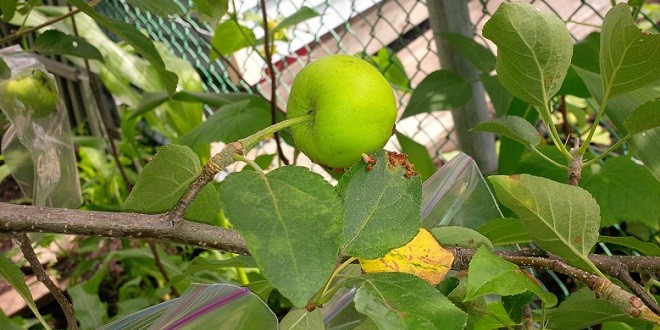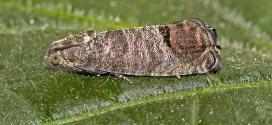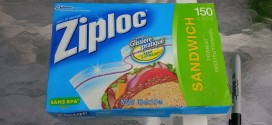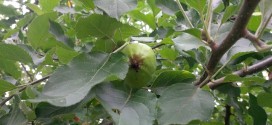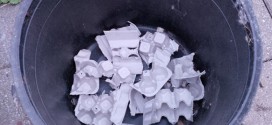While bagging the apples, I found that a lot of apples are stuck either to a small twig, or a leaf. Pulling at the apple, you find that the apple has a hole where it touches the twig or leaf. It is the brownish excrement that glued the apple to the leaf or twig.
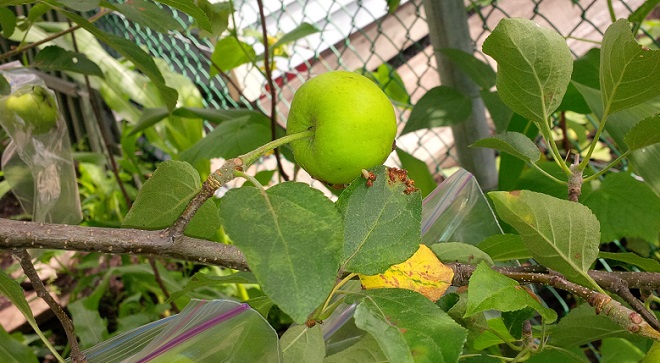
While looking for some better-looking apples to bag, I found this small apple. It looked perfect, but when I lifted it to put a bag on, I realized that it was stuck to a leaf. Then I knew that it had already been infested. I had seen too many of those just the day before. I pulled at the leaf, and saw the tiny larva. And a hole on the apple.
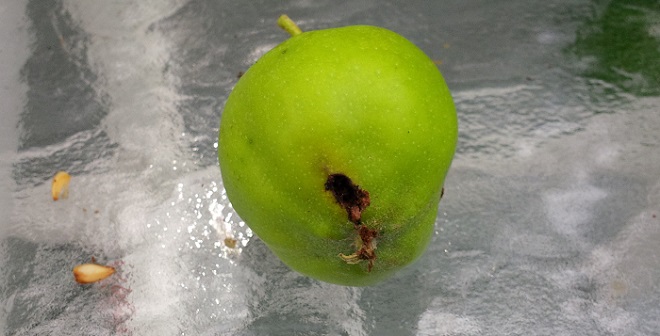
While I was taking picture of the hole, I found another imperfection on the apple, a dent with a sealed hole – that was likely the entry point of another codling moth larva. The larva must have entered a long while ago, and the poor apple tried to heal itself by covering up the hole.
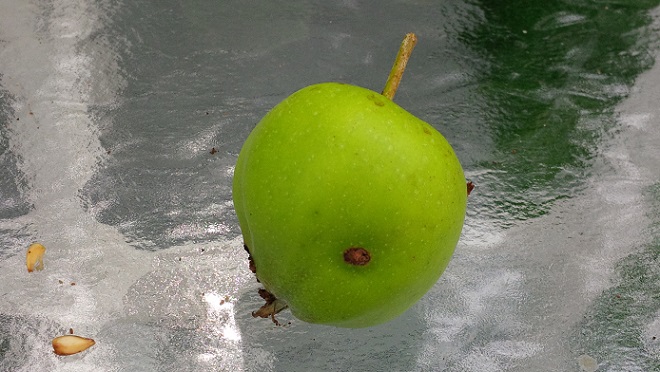
This is how it looks when opened up:
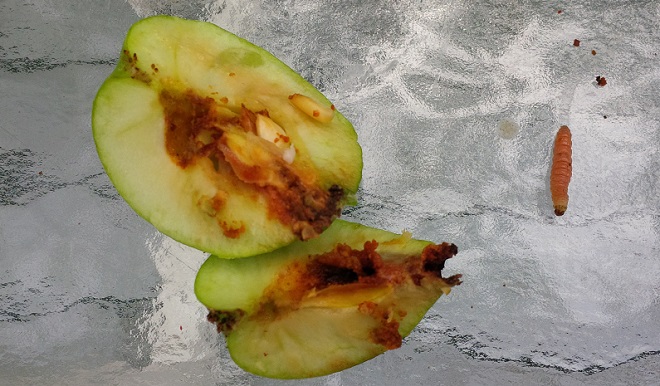
Here is my theory as to how the codling moths infest apples:
- A codling moth lays eggs on a leaf. Or a twig;
- When the eggs hatch, the larvae start looking for apples to infest. As they are not capable of moving at great lengths, and apparently they are not able to jump or fly, the only possible way to get onto an apple is where the twig or leaf the larvae are on physically touch the apple.
- The larvae move onto an apple and start eat their way into the apple. In the process, their excrements stuck the apple and leave or twig.
- When the larva is mature enough to pupate, it exits the apple. If the apples gets lucky, or big enough, the larva does not get to its core yet before exiting, the apple might actually survive.
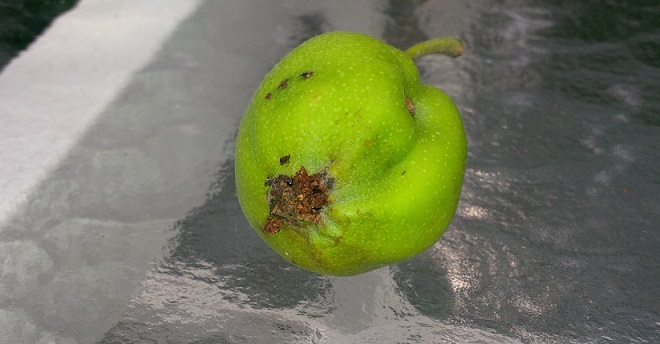
This apple was still on the tree, I cut it off just to see what had deformed it.
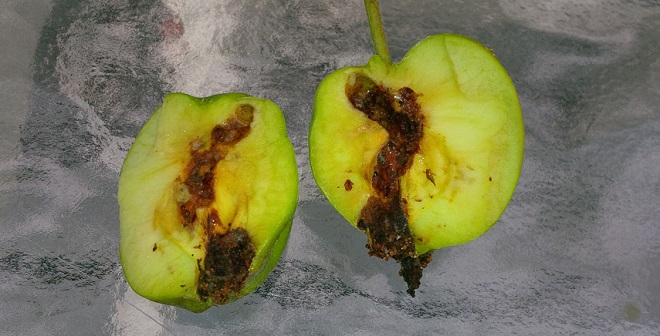
It’s apparent that a codling moth larva had called it home for a while before leaving to pupate, mate and lay eggs just to infest more apples. Looks like I had lost the battle even before it started. My first encounter with codling moths has totally failed! Dealing with codling moths will not be easy, but I am determined! I am going to be your worst nightmare (if you actually dream, that is). Codling moths, you are now officially declared my enemy! I will find every little dirty secret of yours and destroy you!
 EatingOrganic.CA eating healthy, ethical & eco-friendly
EatingOrganic.CA eating healthy, ethical & eco-friendly
